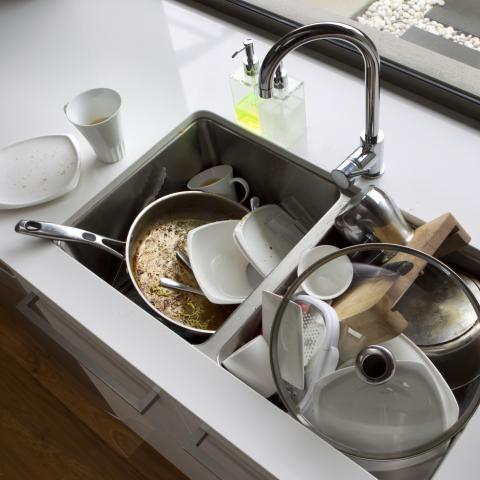Our daily life is always closely associated with numbers. They’re a great tool that provides us with convenience and better understanding with precision. Especially in language learning, Chinese numbers are one of the most necessary things to study right from the start.
Grammar rules and writing numbers in Chinese are quite simple and straightforward. If you follow the guide and practice often enough, I’m sure you’ll become a Chinese-number master in no time! Now let’s get right into the magical world of Chinese numbers!
Table of Contents
- Numbers 0-9
- Numbers 10-100
- Numbers up to 1000
- Numbers from 1000 – 10,000
- Regarding to Phone Numbers
- Saying Prices
- How to Use Numbers When Shopping
- How to Express Time
- Bonus – Fun Chinese Number Slangs
- Conclusion
1. Numbers 0-9
Let’s start with the simplest single numbers you can use!
Numbers in Chinese are called 数字 (shùzì), which literally means “counting words.” The basic numbers in Chinese are extremely simple, and the writings for number of Chinese characters are easy. Especially if you take a closer look at the writings for one to three, you’ll notice that the number of lines is the same as the number itself.
With this in mind, let’s go over a common trick people use to remember numbers. How do you write number one? One line. For number two is two lines, and number three is three lines.
How about four? – Of course, four lines!
So just remember, the “line” writing will start to change after three. Also, before you start to practice, here are a few tips for the line writing for numbers two and three:
- For number two, you need to write the line below longer.
- For number three, you need to write the line in the middle shorter than the top one, and the line at the bottom should be the longest line!
- 0 – 零 (líng)
- 1 – 一 (yī)
- 2 – 二 (èr)
- 3 – 三 (sān)
- 4 – 四 (sì)
- 5 – 五 (wǔ)
- 6 – 六 (liù)
- 7 – 七 (qī)
- 8 – 八 (bā)
- 9 – 九 (jiǔ)
These are a few of the most important numbers in learning Chinese, so be sure to go over these again before moving forward.
2. Numbers 10-100
Here are Chinese characters for numbers 10 to 100.
- 10 – 十 (shí)
- 20 – 二十 (èr shí)
- 30 – 三十 (sān shí)
- 40 – 四十 (sì shí)
- 50 – 五十 (wǔ shí)
- 60 – 六十 (liù shí)
- 70 – 七十 (qī shí)
- 80 – 八十 (bā shí)
- 90 – 九十 (jiǔ shí)
- 100 – 一百 (yī bǎi)
3. Numbers up to 1000
And here are the numbers in Chinese characters for numbers up to 1000.
- 200 – 二百 (èr bǎi) [formal]
- 200 – 两百 (liǎng bǎi) [casual]
- 300 – 三百 (sān bǎi)
- 400 – 四百 (sì bǎi)
- 500 – 五百 (wǔ bǎi)
- 600 – 六百 (liù bǎi)
- 700 – 七百 (qī bǎi)
- 800 – 八百 (bā bǎi)
- 900 – 九百 (jiǔ bǎi)
- 536 – 五百三十六 (wǔ bǎi sān shí liù)
4. Numbers from 1000 – 10,000
- 1000 – 一千 (yī qiān)
- 2000 – 两千 (liǎng qiān)
- 3000 – 三千 (sān qiān)
- 4000 – 四千 (sì qiān)
- 5000 – 五千 (wǔ qiān)
- 6000 – 六千 (liù qiān)
- 7000 – 七千 (qī qiān)
- 8000 – 八千 (bā qiān)
- 9000 – 九千 (jiǔ qiān)
- 10,000 – 一万 (yī wàn)
Additional notes: To express a random number, just put the measurement of the numbers involved in order. For example, 536 needs to be expressed in the following order: 500, 30, and 6. Thus, it’s 五百三十六(wǔ bǎi sān shí liù). It’s not that difficult to grasp!
5. Regarding to Phone Numbers
1- Expressing Your Phone Number
- In Chinese: 我的号码是: “一三零九四二五零六三七”
- Pinyin: Wǒ de hàomǎ shì: “yāo sān líng jiǔ sì èr wǔ líng liù sān qī”
- In English: My phone number is: “13094250637.”
2- Format for Saying the Phone Number
There are two formats for pausing while saying your phone number aloud:
- Format 1: 1-3-0-9-4-2-5-0-6-3-7 (yāo – sān – líng – jiǔ – sì – èr – wǔ – líng – liù – sān – qī)
- Format 2: 130-9425-0637 (yāo sān líng – jiǔ sì èr wǔ – líng liù sān qī)
Additional notes: When number 1 is presented as a series of numbers instead of a quantity, the pronunciation may vary and can be read as yāo.
6. Saying Prices
Wondering how to express price when you see one at the market? It’s not hard!
There are different measurements in prices in Chinese price, which is called 价钱 (jià qián):
- In Chinese: 角 / 毛
Pinyin: jiǎo [formal] / máo [casual]
Equivalent in U.S. money: dime - In Chinese: 分
Pinyin: fēn
Equivalent in U.S. money: cent - In Chinese: 元
Pinyin: yuán
Equivalent in U.S. money: dollar - In Chinese: 五元钱 / 五块钱
Pinyin: wǔ yuán qián [formal] / wǔ kuài qián [casual]
7. How to Use Numbers When Shopping
- In Chinese: 我买一斤。
Pinyin: Wǒ mǎi yī jīn.
In English: I will buy a pound. - In Chinese: 这个多少钱?
Pinyin: Zhè gè duō shǎo qián?
In English: How much is this? - In Chinese: 给我来五个。
Pinyin: Gěi wǒ lái wǔ gè.
In English: I want five of those. - In Chinese: 我要付现金。
Pinyin: Wǒ yào fù xiàn jīn.
In English: I want to pay in cash. - In Chinese: 便宜点吧。
Pinyin: Pián yí diǎn ba.
In English: Make it cheaper.
A reminder: In many Chinese stores that aren’t officially structured, it’s common to bargain. So feel free to use the last phrase and save some money if you’re shopping somewhere casual!
8. How to Express Time
1- Time Measurements
- In Chinese: 时/小时
Pinyin: shí [formal] / xiǎo shí [casual]
In English: hour - In Chinese: 分
Pinyin: fēn
In English: minute - In Chinese: 秒
Pinyin: miǎo
In English: second
2- Asking About Time
- In Chinese: 请问现在几点了?/ 现在是什么时间?
Pinyin: Qǐng wèn xiàn zài jǐ diǎn le? / Xiàn zài shì shén me shí jiān?
In English: What time is it right now?
3- Expressing Specific Time
- A whole time: hour of time + 点 (diǎn) / 点钟 (diǎn zhōng)
Example:
In Chinese: 五点 / 五点钟
Pinyin: wǔ diǎn / wǔ diǎn zhōng
In English: five o’clock - Half hour passed: hour of time + 点半 (diǎn bàn)
Example:
In Chinese: 五点半
Pinyin: wǔ diǎn bàn
In English: five-thirty - Little time passed: hour of time + 点多 (diǎn duō)
Example:
In Chinese: 三点多
Pinyin: sān diǎn duō
In English: Some time past three - Almost the time: 快 (kuài wǔ diǎn le) + hour of time + 点 (diǎn) + 了(le)
Example:
In Chinese: 快六点了。
Pinyin: Kuài liù diǎn le.
In English: It is almost six o’clock.
Please note that the Chinese time system is based on military time. If you use AM/PM, that might cause some confusion.
9. Bonus – Fun Chinese Number Slangs
Four-character slangs are a part of Chinese culture that’s deeply ingrained in people’s daily speaking. They can make your conversation more engaging and entertaining!
Numbers also play a great role in many four-character slangs in order to create a better picture. If you speak any of those slangs, people will probably be impressed in how rich your vocabularies in Chinese are!
Additional notes: There are also some slangs mentioned below that include more than one number.
0 – 零 (líng)
- In Chinese: 零零散散
- Pinyin: líng líng sàn sàn
- Usage: To describe things that are messy and are scattered everywhere
1 – 一 (yī)
- In Chinese: 一清二楚
- Pinyin: yī qīng èr chǔ
- Usage: To describe things that are expressed explicitly and clearly
2 – 二 (èr)
- In Chinese: 三心二意
- Pinyin: sān xīn èr yì
- Usage: To describe a person who gets distracted and doesn’t focus on doing the things they’re supposed to be doing
3 – 三 (sān)
- In Chinese: 三生有幸
- Pinyin: sān shēng yǒu xìng
- Usage: To describe a situation where you feel that you are extremely lucky
4 – 四 (sì)
- In Chinese: 挑三拣四
- Pinyin: tiāo sān jiǎn sì
- Usage: To describe someone who’s very picky
5 – 五 (wǔ)
- In Chinese: 五花八门
- Pinyin: wǔ huā bā mén
- Usage: To describe something that has a great variety of choices
6 – 六 (liù)
If you ever decide to do something selfish and refuse to consider your family’s feelings…here’s the word, which I hope will never happen. 🙁
- In Chinese: 六亲不认
- Pinyin: liù qīn bú rèn
- Usage: To describe when someone does something morally wrong to one’s family or someone that is as close as family, despite the familial bond they shared
7 – 七 (qī)
Look at how messy this is! Want to learn a word to describe it? Here’s the right one!
- In Chinese: 乱七八糟
- Pinyin: luàn qī bā zāo
- Usage: To describe something that’s disorganized and messy
8 – 八 (bā)
- In Chinese: 八面玲珑
- Pinyin: bā miàn líng lóng
- Usage: To describe someone who’s sophisticated and can deal with all kinds of situations and changes wisely and smoothly
9 – 九 (jiǔ)
A dangerous situation like this can be described by an idiom that entails number 9.
- In Chinese: 九死一生
- Pinyin: jiǔ sǐ yī shēng
- Usage: To describe something that’s so dangerous that it’s hard to survive
10 – 十 (shí)
Have you ever done something that’s so perfect that everyone gives you a thumbs-up?
- In Chinese: 十全十美
- Pinyin: shí quán shí měi
- Usage: To describe something or some situation that’s entirely perfect and ideal
10. Conclusion
Numbers, in learning the Chinese language, are very important. I’m sure you had a great experience and paid much effort to learning Chinese numbers and how to utilize them! This is only a brief introduction to Chinese numbers, though, so if you wish to go any further with these, our website is a perfect place for that. Check out ChineseClass101.com and get ready to have a delightful journey in learning Chinese with our fun lessons!

















